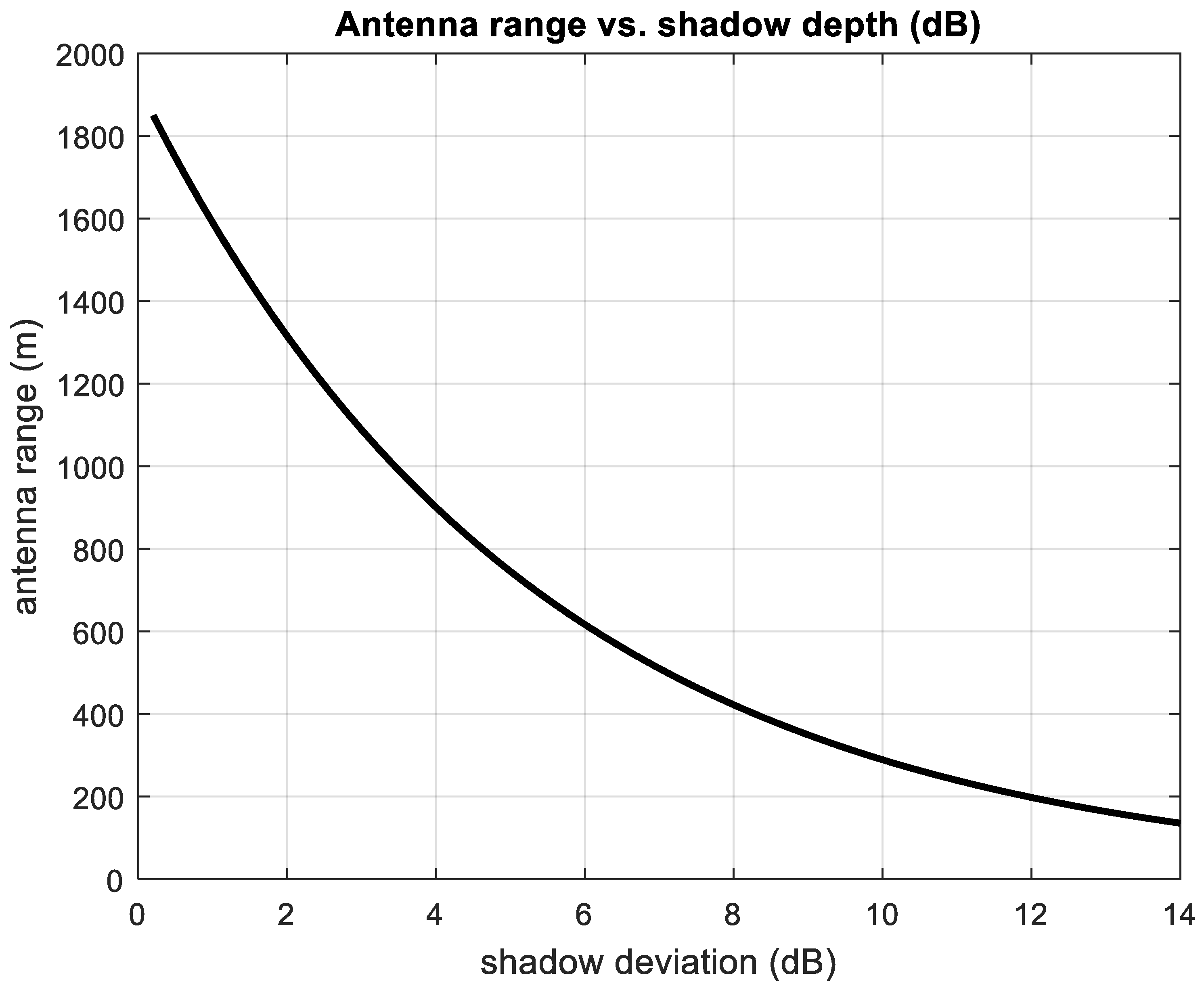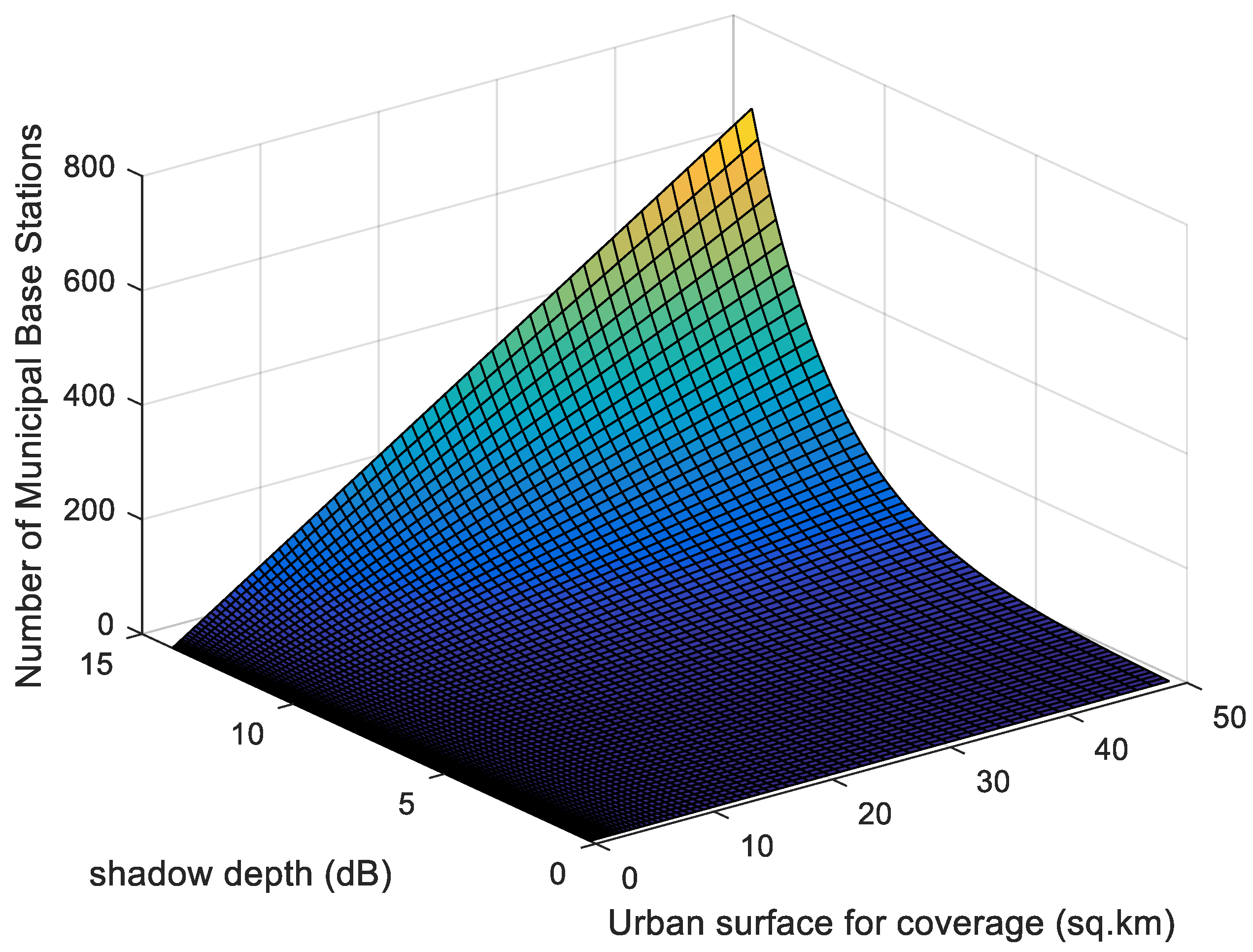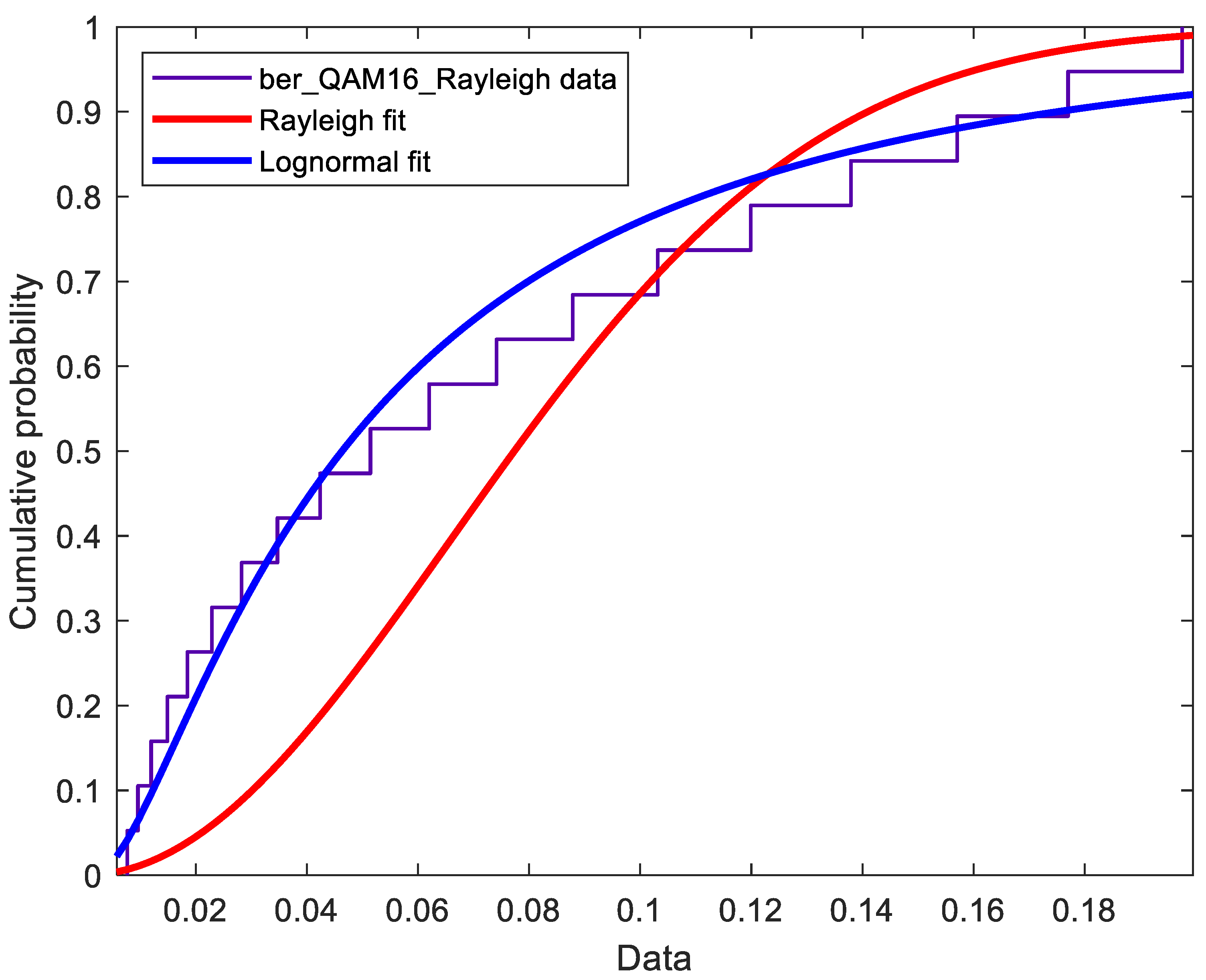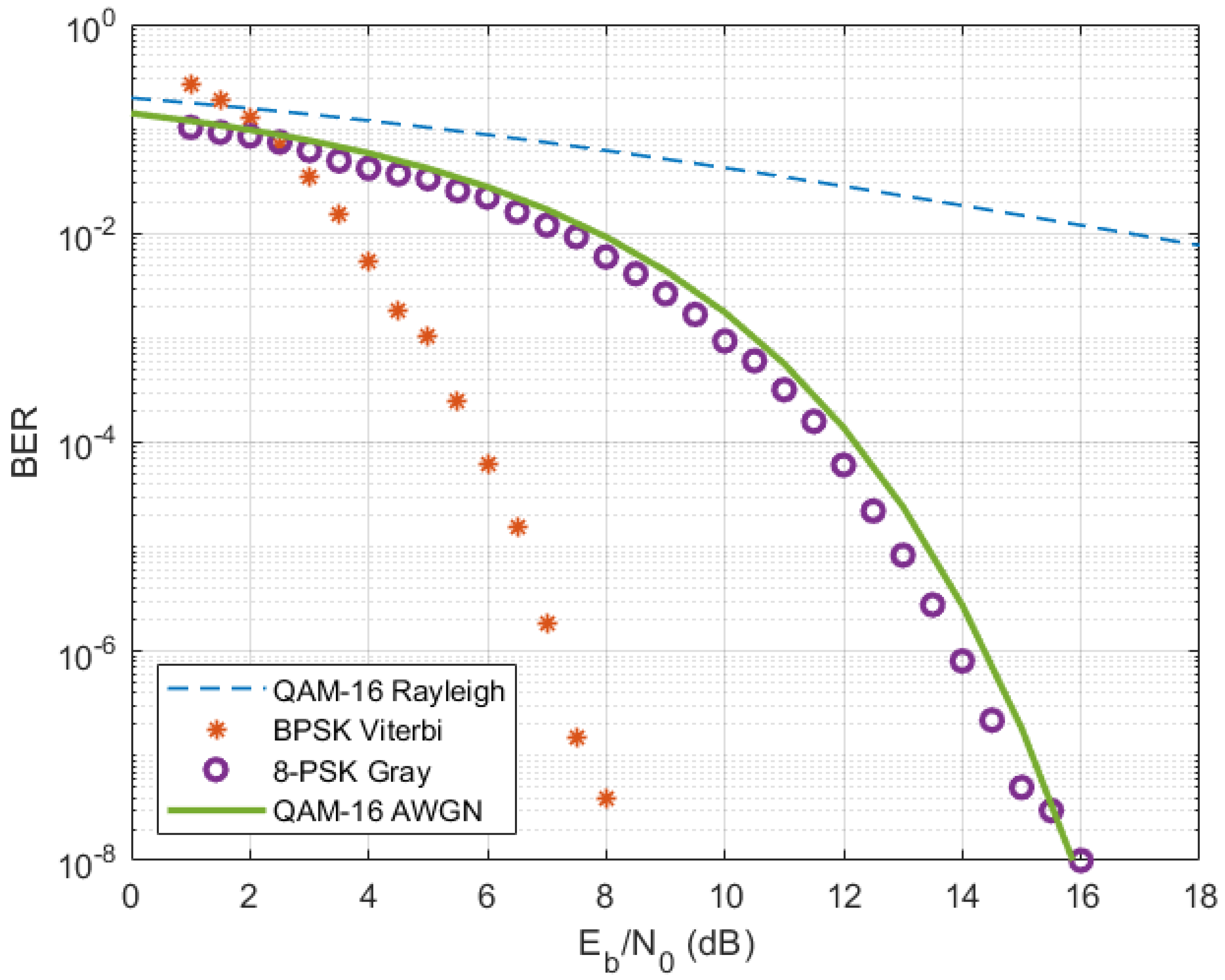RF Coverage Design for the Implementation of a Broadband Monitoring Service in the Context of 5G-Enabled Smart Cities
Abstract
1. Introduction
2. A New Outlook on Smart Cities: The Network-Defined Model
3. Services for Smart Cities: The Human-Centric Designation
- The term “smart economy” refers to e-business and e-commerce, increased production, and ICT (information and communications technology)-driven production and distribution processes, i.e., the integration of integrated communications and electronic systems in the modern era and ICT-oriented innovation, as well as new products, services, and business models;
- The concept of “smart mobility” gives priority to clean and non-motorized energy options over conventionally fueled transportation systems and infrastructure. Smart mobility also refers to all necessary information and the means of passing this information to the public in order to drastically reduce CO2 emissions. This provides yet another example of why a network-defined model of a smart city is more effective;
- The term “smart environment” refers to the overall means and methods for energy efficiency and green policy in an urban metropolitan area. This includes renewable resources, energy metering, pollution control, building renovation, green buildings, green urban design, resource efficiency, and, finally, all effective techniques for the reuse and renewal of resources that serve the “smart environment” cause;
- In the context of a smart city, e-skills and the ability to work within the ICT concept, access education, and manage human resources within a society that promotes excellence and innovation are some of the characteristics that deem someone a “smart person”;
- “Smart living” encompasses an ICT-oriented mentality and way of life. It also includes a healthy and safe life in a culturally active city, with a variety of historical and contemporary references, which are preserved but also further enhanced with the introduction of ICT-based innovation.
- e-Government of the municipality: participation in decision making and implementation of decisions through participatory democratic processes, featuring transparency and public control in the activities of the municipal administration;
- Improvement in the access to the infrastructure of the municipality: Provide innovative services and/or extension of existing services, with the option of “remote access” for both tactical and emergency (i.e., pandemic) scenarios. The digitized services of the municipal register, residence certificate, and family share are also included in this section, which will not only reduce delays and bureaucracy but also reduce the needless consumption of material (e.g., paper) and human resources;
- Networking infrastructure provided by the city to the citizens (community services and networking infrastructure) related to the implementation of applications and technologies to improve the quality of life of the city’s residents. This infrastructure will vary and involve both wired and wireless physical means of transmission but will always have to provide broadband connectivity per user device (and not an “in general” downlink broadband rate), i.e., at least 2.048 Mbps/device in order to provide robust access and service to citizen–users from the services offered.
4. Services for Smart Cities: The ICT-Centric Implementation
5. 5G: The Broadband “Game Changer”
6. 5G as a Smart City Enabler
- Device connectivity: 5G supports a significant increase in the number of interconnected devices, such as sensors, cameras, and actuators, in a wireless infrastructure, which is the basis of IoT deployment. These devices are required in homes, roads, traffic hubs, and public places, such as bus stops and railway stations, in order to support smart traffic systems, smart homes, and public safety, as well as the security and surveillance requirements of smart cities. The interconnection of these devices is made possible by the very large increase in the capacity of the 5G system, due to the following:
- (a)
- Optical conversion of the backhaul/core of the network with the deployment of fiber optics in cities;
- (b)
- The usage of more antenna systems with lower transmit power per antenna;
- (c)
- Therefore, more cells for a given urban coverage area;
- (d)
- Thus, serving more users within each cell and, therefore, across all cells in total. These users are no longer only physical users—subscribers to the mobile service with their mobile phones—but also virtual users, i.e., smart devices that can be served with multi-adaptive rates of broadband connectivity by 5G antennas (i.e., base stations).
- Very high bandwidth up to 100 MHz to support video streaming services over wireless channels and high volumes of data;
- Ultralow network latency for improved user experience, including delivery of 3D and holographic images, for applications such as unmanned driving and AR/VR applications. The latency of less than 1 ms provided by 5G enables ultralow-latency communications that can support sensitive applications in the context of smart cities;
- “Always-on” connectivity provided by 5G supports services in high-mobility/vehicular environments, such as high-speed cars and trains, with strict requirements in terms of Doppler spread and multipath fading. One hundred percent geographical coverage is also required to support an intelligent traffic monitoring and management system. Many smart healthcare services also require an “Always ON” mode, as the reliability of communications is paramount when biomedically sensitive information is involved;
- Energy efficiency: The deployment of a massive number of antennas and devices can burden the energy requirements of a smart city ecosystem. Designation based on 5G ensures that smaller cells and reliable channel estimation leads to a minimum power consumption for all involved devices.
7. Case Studies of Smart Cities
8. Economic Impact of 5G on Smart Cities
9. A Novel Methodology for 5G-Enabled Broadband Connectivity Coverage of Smart Cities
10. Impact of Intrinsic Propagation Characteristics for the Characterization of the Uplink Channel Regarding a Broadband Monitoring Service
11. Conclusions
Author Contributions
Funding
Data Availability Statement
Conflicts of Interest
References
- MIT Media Lab—City Science. Available online: http://cities.media.mit.edu/projects/examples (accessed on 1 November 2022).
- IBM Smart Cities Projects. Available online: http://www.ibm.com/smarterplanet/us/en/smarter_cities/overview/ (accessed on 1 November 2022).
- Rao, S.K.; Prasad, R. Impact of 5G Technologies on Smart City Implementation. Wirel. Pers. Commun. 2018, 100, 161–176. [Google Scholar] [CrossRef]
- Smart Cities Mission of India. Available online: https://www.india.gov.in/spotlight/smart-cities-mission-step-towards-smart-india (accessed on 15 November 2022).
- Chrysikos, T. Lectures on Information Systems; University of Thessaly: Lamia, Greece, 2022. [Google Scholar]
- Chrysikos, T.; Galiotos, P.; Kotsopoulos, S.; Dagiuklas, T. Techno-economic analysis for the deployment of PPDR services over 4G/4G+ Networks. In Proceedings of the 2016 International Conference on Telecommunications and Multimedia (TEMU), Heraklion, Greece, 25–27 July 2016; IEEE: Piscataway, NJ, USA, 2016; pp. 1–7. [Google Scholar]
- Piro, G.; Cianci, I.; Grieco, L.A.; Boggia, G.; Camarda, P. Information centric services in smart cities. J. Syst. Softw. 2014, 88, 169–188. [Google Scholar] [CrossRef]
- Cianci, I.; Piro, G.; Grieco, L.; Boggia, G.; Camarda, P. Content Centric Services in Smart Cities. In Proceedings of the 2012 Sixth International Conference on Next Generation Mobile Applications, Services and Technologies, Paris, France, 12–14 September 2012; pp. 187–192. [Google Scholar] [CrossRef]
- Kazmi, A.; Serrano, M.; Lenis, A. Smart Governance of Heterogeneous Internet of Things for Smart Cities. In Proceedings of the 2018 12th International Conference on Sensing Technology (ICST), Limerick, Ireland, 4–6 December 2018; pp. 58–64. [Google Scholar] [CrossRef]
- Caragliu, A.; Del Bo, C.; Nijkamp, P. Smart cities in Europe. J. Urban Technol. 2011, 18, 65–82. [Google Scholar] [CrossRef]
- Batty, M.; Axhausen, K.W.; Giannotti, F.; Pozdnoukhov, A.; Bazzani, A.; Wachowicz, M.; Ouzounis, G.; Portugali, Y. Smart cities of the future. Eur. Phys. J. Spec. Top. 2012, 214, 481–518. [Google Scholar] [CrossRef]
- Harrison, C.; Donnelly, I.A. A theory of smart cities. In Proceedings of the 55th Annual Meeting of the ISSS-2011, Hull, UK, 17–22 July 2011. [Google Scholar]
- Letaifa, S.B. How to strategize smart cities: Revealing the SMART model. J. Bus. Res. 2015, 68, 1414–1419. [Google Scholar] [CrossRef]
- Chourabi, H.; Nam, T.; Walker, S.; Gil-Garcia, J.R.; Mellouli, S.; Nahon, K.; Pardo, T.A.; Scholl, H.J. Understanding smart cities: An integrative framework. In Proceedings of the 2012 45th Hawaii International Conference on System Sciences, Maui, HI, USA, 4–7 January 2012; IEEE: Piscataway, NJ, USA, 2012. [Google Scholar]
- Deakin, M.; Al Waer, H. From intelligent to smart cities. Intell. Build. Int. 2011, 3, 140–152. [Google Scholar] [CrossRef]
- Li, Z.; Uusitalo, M.A.; Shariatmadari, H.; Singh, B. 5G URLLC: Design challenges and system concepts. In Proceedings of the 2018 15th International Symposium on Wireless Communication Systems (ISWCS), Lisbon, Portugal, 28–31 August 2018; IEEE: Piscataway, NJ, USA, 2018; pp. 1–6. [Google Scholar]
- Minoli, D.; Occhiogrosso, B. Practical aspects for the integration of 5G networks and IoT applications in smart cities environments. Wirel. Commun. Mob. Comput. 2019, 2019, 5710834. [Google Scholar] [CrossRef]
- Guevara, L.; Auat Cheein, F. The role of 5G technologies: Challenges in smart cities and intelligent transportation systems. Sustainability 2020, 12, 6469. [Google Scholar] [CrossRef]
- Zhao, X.; Askari, H.; Chen, J. Nanogenerators for smart cities in the era of 5G and Internet of Things. Joule 2021, 5, 1391–1431. [Google Scholar] [CrossRef]
- Han, T.; Ge, X.; Wang, L.; Kwak, K.S.; Han, Y.; Liu, X. 5G converged cell-less communications in smart cities. IEEE Commun. Mag. 2017, 55, 44–50. [Google Scholar] [CrossRef]
- Angelidou, M. Smart cities: A conjuncture of four forces. Cities 2015, 47, 95–106. [Google Scholar] [CrossRef]
- Albino, V.; Berardi, U.; Dangelico, R.M. Smart cities: Definitions, dimensions, performance, and initiatives. J. Urban Technol. 2015, 22, 3–21. [Google Scholar] [CrossRef]
- Ahvenniemi, H.; Huovila, A.; Pinto-Seppä, I.; Airaksinen, M. What are the differences between sustainable and smart cities? Cities 2017, 60, 234–245. [Google Scholar] [CrossRef]
- Lazaroiu, G.C.; Roscia, M. Definition methodology for the smart cities model. Energy 2012, 47, 326–332. [Google Scholar] [CrossRef]
- Manville, C.; Cochrane, G.; Jonathan, C.A.; Millard, J.; Pederson, J.K.; Thaarup, R.K.; WiK, A.L.; WiK, M.W. Mapping Smart Cities in the EU; EPRS: Brussels, Belgium, 2014. [Google Scholar]
- Zanella, A.; Bui, N.; Castellani, A.; Vangelista, L.; Zorzi, M. Internet of things for smart cities. IEEE Internet Things J. 2014, 1, 22–32. [Google Scholar] [CrossRef]
- Mahizhnan, A. Smart cities: The Singapore case. Cities 1999, 16, 13–18. [Google Scholar] [CrossRef]
- Available online: https://ajuntament.barcelona.cat/digital/en/digital-innovation/digital-economy/5g-barcelona (accessed on 30 November 2022).
- Available online: https://5gbarcelona.org/pilots/5g-interactive-city/ (accessed on 30 November 2022).
- Available online: https://www.5gmediahub.eu/5gmediahub-in-smart-city-world-congress-in-barcelona/ (accessed on 30 November 2022).
- Available online: https://www.investstratford.com/smart-city (accessed on 30 November 2022).
- Available online: https://www.smartcitiesworld.net/4g-and-5g/4g-and-5g/singapore-to-create-testbed-for-maritime-5g-use-cases (accessed on 30 November 2022).
- Alfa, A.S.; Maharaj, B.T.; Ghazaleh, H.A.; Awoyemi, B. The role of 5G and IoT in smart cities. In Handbook of Smart Cities; Springer: Cham, Switzerland, 2018; pp. 31–54. [Google Scholar]
- Shehab, M.J.; Kassem, I.; Kutty, A.A.; Kucukvar, M.; Onat, N.; Khattab, T. 5G Networks Towards Smart and Sustainable Cities: A Review of Recent Developments, Applications and Future Perspectives. IEEE Access 2021, 10, 2987–3006. [Google Scholar] [CrossRef]
- Gohar, A.; Nencioni, G. The role of 5G technologies in a smart city: The case for intelligent transportation system. Sustainability 2021, 13, 5188. [Google Scholar] [CrossRef]
- Yin, C.; Xiong, Z.; Chen, H.; Wang, J.; Cooper, D.; David, B. A literature survey on smart cities. Sci. China Inf. Sci. 2015, 58, 1–18. [Google Scholar] [CrossRef]
- Al Nuaimi, E.; Al Neyadi, H.; Mohamed, N.; Al-Jaroodi, J. Applications of big data to smart cities. J. Internet Serv. Appl. 2015, 6, 25. [Google Scholar] [CrossRef]
- Bellavista, P.; Cardone, G.; Corradi, A.; Foschini, L. Convergence of MANET and WSN in IoT urban scenarios. IEEE Sens. J. 2013, 13, 3558–3567. [Google Scholar] [CrossRef]
- Jakes, W.C. (Ed.) Microwave Mobile Communications; Wiley Interscience: New York, NY, USA, 1974. [Google Scholar]
- Seybold, J.S. Introduction to RF Propagation; Wiley Interscience: Hoboken, NJ, USA, 2005. [Google Scholar]
- Rappaport, T. Wireless Communications: Principles & Practice; Prentice Hall: Upper Saddle River, NJ, USA, 1999. [Google Scholar]
- Chrysikos, T.; Kotsopoulos, S. Characterization of large-scale fading for the 2.4 GHz channel in obstacle-dense indoor propagation topologies. In Proceedings of the IEEE Vehicular Technology Conference (VTC-Fall 2012), Quebec City, QC, Canada, 3–6 September 2012. [Google Scholar]
- Vieira, P.; Queluz, M.; Rodrigues, A. LTE Multi Antenna Bit Rate Expectation for Urban Macro-cell Networks. In Proceedings of the 7th Ibero-American Congress on Sensors (IBERSENSOR 2010), Lisbon, Portugal, 9–11 November 2010. [Google Scholar]
- Available online: https://www.who.int/data/gho/indicator-metadata-registry/imr-details/2380 (accessed on 1 November 2022).
- Tanenbaum, A.S. Computer Networks; Prentice Hall: Hoboken, NJ, USA, 2003. [Google Scholar]
- Hämäläinen, M.; Taparugssanagorn, A.; Iinatti, J. On the WBAN radio channel modelling for medical applications. In Proceedings of the 5th European Conference on Antennas and Propagation (EUCAP), Rome, Italy, 11–15 April 2011; IEEE: Piscataway, NJ, USA, 2011; pp. 2967–2971. [Google Scholar]
- Yigitcanlar, T.; Kamruzzaman, M.; Buys, L.; Ioppolo, G.; Sabatini-Marques, J.; da Costa, E.M.; Yun, J.J. Understanding ‘smart cities’: Intertwining development drivers with desired outcomes in a multidimensional framework. Cities 2018, 81, 145–160. [Google Scholar] [CrossRef]
- Kramarz, M.; Dohn, K.; Przybylska, E.; Jonek-Kowalska, I. Smart City: A Holistic Approach. In Urban Logistics in a Digital World; Palgrave Macmillan: Cham, Switzerland, 2022; pp. 1–19. [Google Scholar]






| Smart World | Examples of Services |
|---|---|
| Transportation | Intelligent parking, bicycle management, and ITS (intelligent transport systems) |
| Healthcare | Mobile health/mHealth solutions, smart home care systems, remote monitoring systems for the elderly, chronically ill or disabled, and stay-at-home patient monitoring during a pandemic (i.e., COVID-19) |
| Energy | Smart meters for electricity, gas, and water supply, smart grid services, and decentralized energy systems |
| Building and Housing Infrastructure | Smart homes using sensors for heating, air conditioning, lighting, security systems, and other applications |
| Education | Mobile learning applications and remote access |
| Waste Disposal | Smart bins in homes, shopping centers, public buildings, and public spaces |
Disclaimer/Publisher’s Note: The statements, opinions and data contained in all publications are solely those of the individual author(s) and contributor(s) and not of MDPI and/or the editor(s). MDPI and/or the editor(s) disclaim responsibility for any injury to people or property resulting from any ideas, methods, instructions or products referred to in the content. |
© 2023 by the authors. Licensee MDPI, Basel, Switzerland. This article is an open access article distributed under the terms and conditions of the Creative Commons Attribution (CC BY) license (https://creativecommons.org/licenses/by/4.0/).
Share and Cite
Chrysikos, T.; Gourna, S.; Skouroliakou, A. RF Coverage Design for the Implementation of a Broadband Monitoring Service in the Context of 5G-Enabled Smart Cities. Information 2023, 14, 156. https://doi.org/10.3390/info14030156
Chrysikos T, Gourna S, Skouroliakou A. RF Coverage Design for the Implementation of a Broadband Monitoring Service in the Context of 5G-Enabled Smart Cities. Information. 2023; 14(3):156. https://doi.org/10.3390/info14030156
Chicago/Turabian StyleChrysikos, Theofilos, Sotiria Gourna, and Aikaterini Skouroliakou. 2023. "RF Coverage Design for the Implementation of a Broadband Monitoring Service in the Context of 5G-Enabled Smart Cities" Information 14, no. 3: 156. https://doi.org/10.3390/info14030156
APA StyleChrysikos, T., Gourna, S., & Skouroliakou, A. (2023). RF Coverage Design for the Implementation of a Broadband Monitoring Service in the Context of 5G-Enabled Smart Cities. Information, 14(3), 156. https://doi.org/10.3390/info14030156






